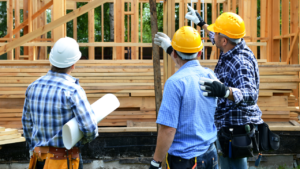 As a builder or a property owner you might be concerned about potential liability for any injury suffered by those employees who were hired by a contractor you hired. Here are a few important points to keep in mind as per California law that should help minimize this risk.
As a builder or a property owner you might be concerned about potential liability for any injury suffered by those employees who were hired by a contractor you hired. Here are a few important points to keep in mind as per California law that should help minimize this risk.
Generally, a strong presumption exists that a hirer of an independent contractor delegates to the contractor all the responsibility for workplace safety. This means that unless certain exceptions apply (as detailed below), the contractor is responsible for any injuries suffered by the contractor’s workers. This is also known as a Privette doctrine.
There are, however, two exceptions to this rule:
I. The Retained Control Exception
The first exception is usually referred to as the “retained control exception”. It applies if (a) the hirer retains contorl over the manner in which the contractor performs the work; (2) the hirer actually exercises its retained control by involving itself in the work such that the contractor is not entirely free to do the work in its own manner” and (3) the hirer’s exercise of retained control affirmatively contributes to the worker’s injury. Sandoval v Qualcomm Inc. (2021) 12 Cal.5th 256, 276-7. A common situation where this exception might apply is where the property owner would not allow contractor’s workers to erect the safety mechanism at the job site that would have prevented the injury in question from occuring. It’s imporant to note that in order to hold the land owner or operator liable, it’s not enough to show that he was able to control the worksite. It’s also necessary to show that the hirer actually exercised control, i.e. did not allow the erection of the safety mecanism, and that action actualy lead to an injury.
As the hirer of a contractor, you should know that the best way to avoid liability for any injuries on a job site is to have as little involvement as possible in telling workers how to get their job done, to the extent possible.
II. Concealed Hazard Exception
This exception applies if the hirer is also an owner or poessor of land and if “the landowner knew, or should have known, of a latent or concealed preexisting hazardous condition on its property, the contractor did not know and could not have reasonably discovered this harzardous condition, and the landowner failed to warn the contract about this condition.” Kinsman v Unocal Corp. (2005) 37 Cal.4th 659, 664. Under this exception, a recovery from the hirer is available “only in those cases in which the owner has control over the dangerous condition and acts, or fails to act, in a manner that affirmatively contributes to the employee’s injury.” A common example where this exception would apply is having a broken stairwell in the building that you hired a contractor to remodel, which you knew was broken without informing the contractor, and on which a worker fell and got injuried because that staircase was broken.
One simple way to avoid falling into this exception as a hirer of a contractor is to thoroughly inspect your property / worksite and inform the contractor in writing of any conditions that could potential create a risk of injury to workers.